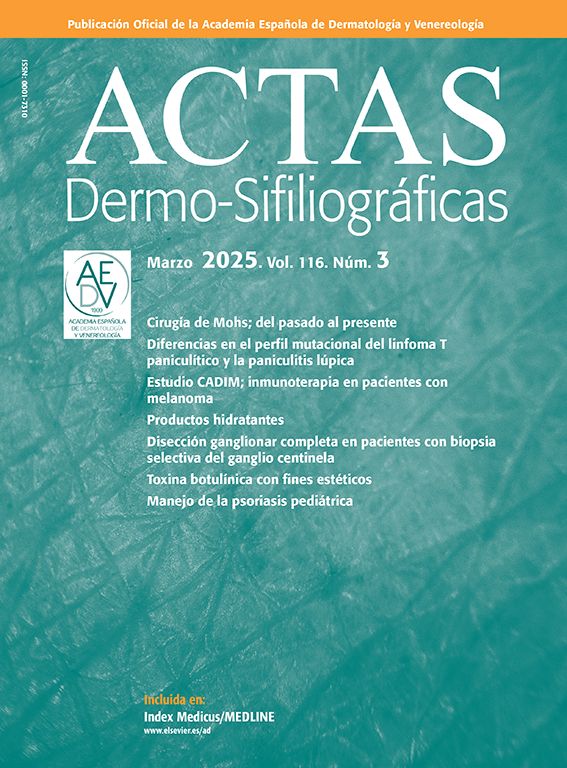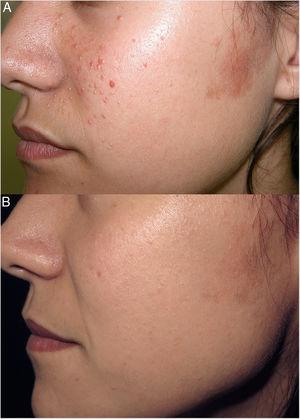A 52-year-old healthy woman consulted with a 1-week history of a skin lesion on the ulnar border of her left hand. The lesion was rapidly growing and mildly pruritic. The patient had no fever, history of local trauma, or other associated symptoms. Notably, her occupational history included working as a butcher, in contact primarily with sheep. On examination, a well-demarcated 3cm erythematous–edematous plaque measuring was noted, mildly infiltrated, with perilesional erythema and a centrally overlying pseudopustule (Fig. 1). Non-painful<1cm axillary lymphadenopathies were also seen. Skin biopsy revealed a pattern of superficial and deep perivascular dermatitis with abundant eosinophils, and the tissue culture ruled out bacterial, fungal, or mycobacterial infections. The lesion resolved after 3 weeks without the need for treatment or scarring.
The orf nodule is a zoonosis caused by a virus of the genus Parapoxvirus, primarily infecting sheep and goats. Most cases occur in high-risk professions in direct contact with infected animals. After an incubation period of 3–8 days, the lesion appears progressing through various stages—macule, papule, nodule, vesicle, and crust—self-resolving within a matter of 3–6 weeks. The characteristic lesion and the history of contact with sheep allowed for the diagnosis of orf nodule, as opposed to the nodule of milkers, whose clinical presentation is indistinguishable but occurs in individuals in contact with cattle.
Ethical considerationsInformed consent was obtained from the patient, who approved the use of clinical data, images, and any clinical material related to her condition for scientific and publication purposes.
Conflicts of interestNone declared.







